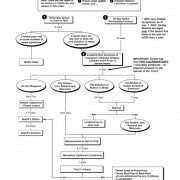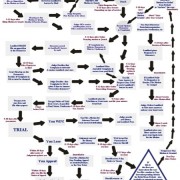Break It Down Now: The Dreaded Eviction Process
With an uncooperative or late/non-paying tenant, a property owner may be out of options. The next course of action is eviction.
There are two scenarios that could warrant the necessity to evict a tenant. Either they have breached the lease agreement in some fashion, or they are not paying rent, which is also a violation of the contract they signed. In California, the eviction process is comprehensive and can be lengthy. I will discuss the process in simple terms as I have experienced utilizing an Eviction Company, however there are certain ways that the progression can be drawn out even longer.
The first step is to serve the tenants a 3-day notice to pay rent or quit. This notice outlines all the past due rent and gives the tenants the options to pay the rent in full or vacate the property. When they do not vacate the property after the 3 days, then the main eviction process can start. Money should not be received from the tenants after the 3 days, or anytime during the eviction process.
After the 3 days allotted for payment expire, a “Complaint” is required to be filed with the courts. This is also known as an Unlawful Detainer. The Complaint states the plaintiff(s) and defendant(s), the amounts owed, and reasons for evictions. Once this is filed, then the tenants must be served the Complaint so they are aware there is a standing court case against them. From experience, having to serve this notice to the tenants can lengthen the process because they can purposely “duck” from being served. The notice has to personally be served to one of the tenants, and there must be three attempts made to try and accomplish this deed. If the Complaint cannot be served personally, then an Order to Post must be granted through the courts to post a copy of the Complaint on the property door and send another copy through the mail.
Once the Complaint is served to the tenants, then the countdown begins. Tenants are given a certain number of days to allow them to file an “Answer” against the Complaint. The number of days is 5 if they are personally served, or up to 18 days if served by substituted service or service by posting. This Answer basically sums up their defense as to why the eviction started in the first place. If the courts receive an Answer, then the Complaint is contested and will result in a trial hearing. If an Answer is not filed, then a Default can be filed claiming the owner victorious. The next step is filing a Judgment and getting a Writ issued to have a Sheriff perform a Lockout.
If the case has to go to trial because an Answer was filed, the next step is waiting for a hearing date to be set with the courts. On the day of the trial, all related parties to the hearing, including attorneys if present, negotiate terms before going in front of the Judge. The Judge will review all evidence submitted to the courts (3-Day Notice, Complaint, Answer, etc.) and will talk with both parties. When the Judge is satisfied with the information provided, a decision will be made. If the decision is in favor of the tenants, then they can file for monetary reimbursement of Court Fees from the owner and continue to remain in the possession of the property. If the decision is in favor of the owner, then Judgments for money and possession are filed with the courts against the tenants. Once processed, a Writ is issued to gain possession of the home and given to a local Sheriff’s office to schedule a Lockout.
The Sheriff must serve a 5-day Notice to Vacate to the tenants and allot them that time to move out. When that time has passed, the Sheriff can show up at the home and physically remove the tenants, only allowing them the possessions they can carry. Once out of the home, the owner must store (at the property or elsewhere) the remaining items of the tenant’s possessions for up to 18 days. Within the 18 days, the tenants must schedule with the owner to move out the rest of the items. If there are still items after the 18 days, then the owner must inventory all the remaining items not considered trash and send a copy of this list to the tenants. There are rules for how to handle possessions worth above or below $300.
As with any legal proceeding, the time it takes to complete the entire process depends on many different factors. The tenants have recourse routes available to draw out the length of the process. Also, in any step where the courts are involved, the time it takes to complete that step depends solely on how backed up the courts are at the time. The whole procedure of evicting tenants can take anywhere from three (3) to twelve (12) weeks, possibly even longer.
Below are two flowcharts to understand the eviction procedure. The first shows the flow and general timeframes for a normal eviction. The second shows all the ways a tenant can lengthen the eviction proceedings.







PLEASE EXPLAIN FURTHER ON THE LAWS FOR WHAT MUST BE DONE WITH THE PERSONAL PROPERTY OF THE TENANT.I HAD BEEN TOLD THAT THEY WOULD BE REQUIRED TO STORE IT FOR 6 MONTHS AT TENANTS EXSPENSE.?
IN ADDITION DOES IT MAKE A DIFFERENCE IF THE EVICTION IS THAT OF A HOMEOWNER BY A BANK THATS STEALING THEIR HOME?? IM NOT SURE IF THESE JUDGES REALLY DONT KNOW THE LAW OR HAVE SOMETHING INVESTED TO LOSE.EITHER WAY THE AGENT FOR THE BANK SOLD OUR PERSONAL PROPERTY FOR $300.00 and let anyone who wanted to take stuff take it!! Except us…we were theatend to be arrested.Its made me sick that no one protected the homeowners.We had 23 yrs in our home and six boys whos lives have forever been changed!!!